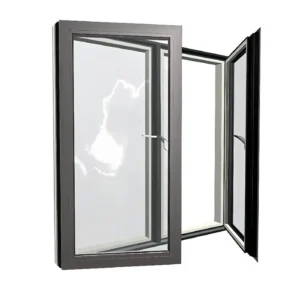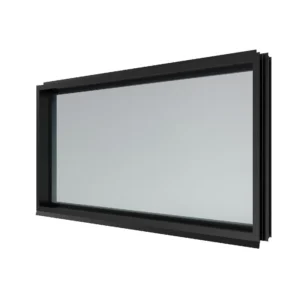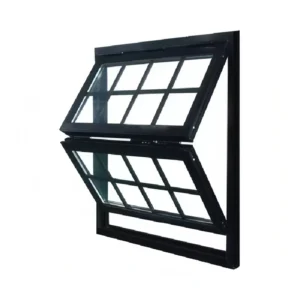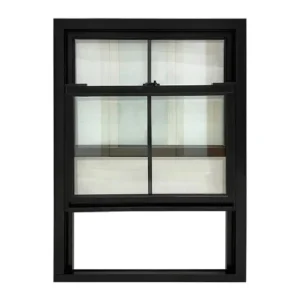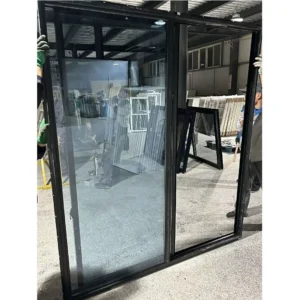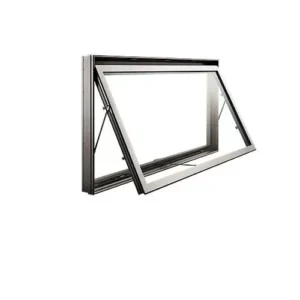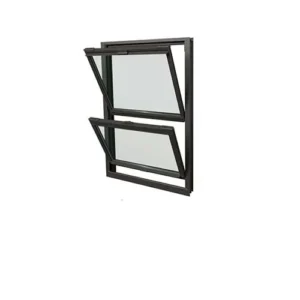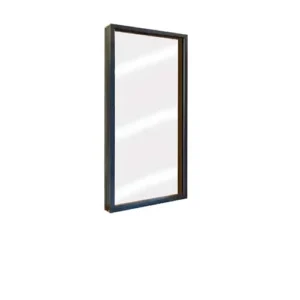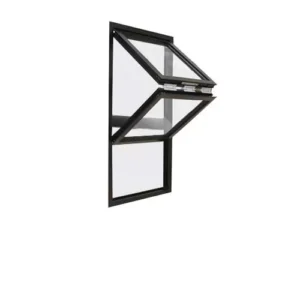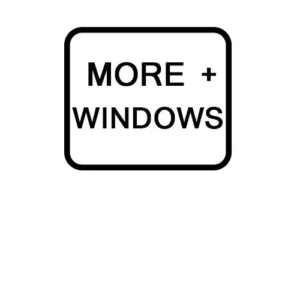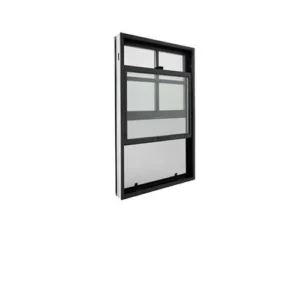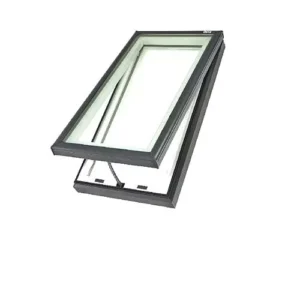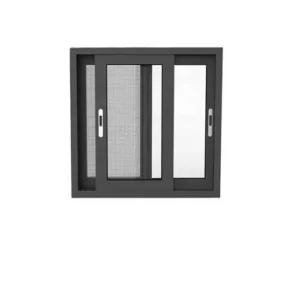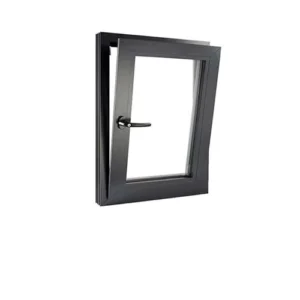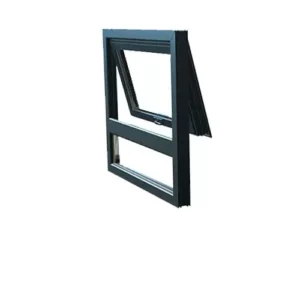ABOUT Aluminum WINDOW FAQ
Aluminum profiles: Extruded sections (often with polyamide or polyurethane thermal-break inserts) forming the sash and frame
Glazing units: Single, double, or triple panes sealed with gaskets to ensure air- and water-tight performance
Hardware: Hinges, handles, locks, and weather-strips designed to fit slim aluminum sections
Thermal breaks: Insulating barriers between interior and exterior aluminum to reduce heat transfer and condensation
Durability & Low Maintenance
Aluminum resists corrosion, warping, and cracking, and requires only simple cleaning to maintain appearance
Slim sightlines
High material strength allows very narrow frames, maximizing glass area for daylight and views
Design flexibility
Extrusion supports custom shapes, large spans, curved profiles, and a wide palette of powder-coat or anodized finishes
Recyclability
Aluminum is almost infinitely recyclable with minimal loss of properties, making it a sustainable choice
Casement (side-hinged, opens outward) for excellent ventilation
Awning (top-hinged, opens upward) for rain-protected airflow
Fixed (Picture) (non-operable) for maximum light and views
Sliding (horizontal sash movement) for space-efficient operation
In fact, aluminum alloy can be customized into any style of windows and doors, and this material is also the choice of most customers in the market.
是的,铝合金窗通常比乙烯基窗贵。平均而言,更换乙烯基窗户的成本比同类铝合金窗户低 30%。例如,更换六扇铝合金窗的成本可能在 $260 左右,而乙烯基窗的成本一般较低。
Frame slenderness & span: Aluminum supports much slimmer profiles and larger maximum sizes (up to ~6 ft 6 in tall) compared to uPVC (~5 ft 3 in)
Thermal performance: 玻璃钢 inherently insulates better, while aluminum requires high-quality thermal breaks to match or approach uPVC’s U-values
Cost: uPVC is generally more affordable upfront; aluminum costs 25–50 % more but can prove cost-effective long term due to durability
Maintenance: uPVC (especially white) can discolor and requires occasional frame cleaning; aluminum finishes (especially anodized/Texguard) resist dirt and need minimal upkeep
Aesthetic & color: uPVC is often limited to white or wood-effect finishes; aluminum offers virtually limitless colors and sleek profiles
Environmental impact: Both are recyclable, but aluminum’s recycling infrastructure and high recycled content (>95 %) give it an edge in circularity
铝合金窗的使用寿命一般为 20 至 40 年,具体取决于维护、气候和安装质量等因素。铝合金窗经久耐用,不易生锈,只要保养得当,是一种经久耐用的选择。
铝合金窗价格示例:
- 可倾可转窗(1 片玻璃): $22.00
- 上悬窗(1 层玻璃): $18.00
- 遮阳篷窗(1 块玻璃): $12.00
- 固定窗(1 片玻璃): $17.00
- 折叠窗(1 片玻璃): $15.00
- 单悬窗(1 片玻璃): $15.00
- 天窗(1 片玻璃): $12.00
- 双层玻璃窗(1 片玻璃): $25.00
- 平开窗(1 片玻璃): $22.00
- 推拉窗(1 片玻璃): $22.00
这些是单层玻璃铝合金窗的一般价格。根据附加功能或定制选项,价格可能会有所不同。
价格取决于您所需的玻璃类型。请随时 联系我们 获取最新报价。
根据美国环境保护局(EPA)的资料,单层铝窗格
窗户是最不节能的窗户类型之一。它们能
与双层或三层玻璃相比,传热更多,因此供暖和制冷效果更好
帐单
更换铝合金窗,尤其是单层铝合金窗,确实是一项值得的投资,原因有几个,主要与能效、舒适度和长期节约有关。原因如下
1.能源效率
单层铝合金窗的能效较低,因为它们允许更多的热量传递,这意味着您的供暖和制冷系统必须更加努力地工作才能保持稳定的温度。这将导致更高的能源费用。
双层或三层窗户的设计能提供更好的隔热效果。窗玻璃之间的空隙(通常充满空气或气体)可大大减少热量的传递,有助于更有效地保持室内温度。用双层或三层铝合金窗替换单层铝合金窗可以大大降低能耗。
2.舒适性和降噪
较新的窗户,尤其是双层或三层窗户,可以通过减少气流来提高室内舒适度,让您的家冬暖夏凉。
双层或三层窗户还具有更好的隔音性能,如果您住在嘈杂的地方,这也是一个好处。
3.潜在的成本节约
虽然更换铝合金窗可能是一项初始投资,但长期节省的供暖和制冷成本往往可以抵消前期成本。随着时间的推移,节能效果会使更换成本物有所值。
此外,节能窗户还能提高房屋的价值,尤其是在您计划将来出售房屋时。
4.环境效益
通过提高能效,您可以减少对供暖和制冷的需求,这反过来又有助于降低您的碳足迹。这既符合节能目标,又能减少对环境的影响。
5.耐用性和维护
与老式窗户相比,现代铝合金窗户更加耐用,所需的维护也更少。与其他材料(如木材)相比,它们不易出现翘曲、腐烂或剥落等问题。
许多新型铝合金窗都带有隔热条和更好的耐候密封条,可减少冷凝现象,延长窗户的使用寿命。
值得更换吗?
考虑到能效的提高、降低水电费的潜力以及舒适度的提升,用更节能的窗户(如双层或三层窗户)更换旧铝合金窗通常被认为是一项很好的投资。不过,这一决定取决于您窗户的具体情况、更换成本以及预期的长期节约效果。
如果您正在考虑在家中安装铝合金窗,费用会因几个因素而有所不同。窗户尺寸、颜色选择和任何五金配件都会影响最终价格。一般来说,您可能需要花费 介于 $80 和 $150 之间 完全安装的铝合金窗。


